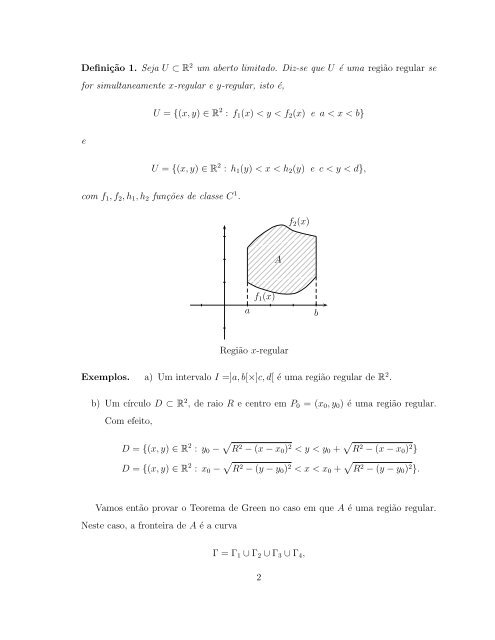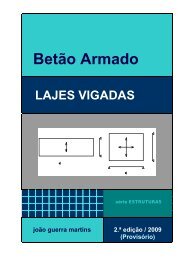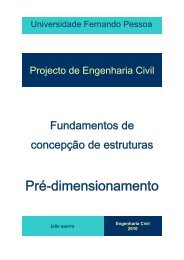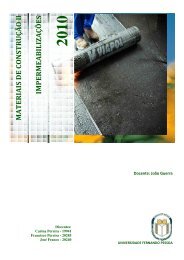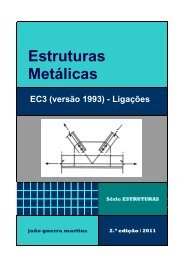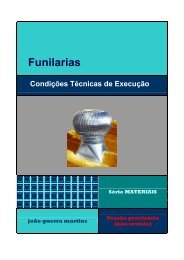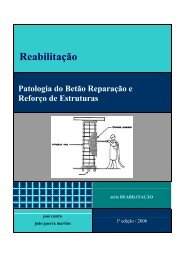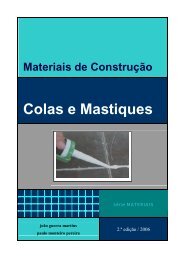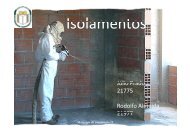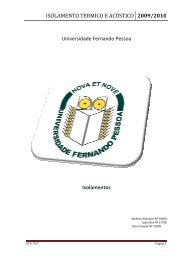You also want an ePaper? Increase the reach of your titles
YUMPU automatically turns print PDFs into web optimized ePapers that Google loves.
Definição 1. Seja U ⊂ R 2 um aberto limitado. Diz-se que U é uma região regular se<br />
for simultaneamente x-regular e y-regular, isto é,<br />
e<br />
U = {(x, y) ∈ R 2 : f1(x) < y < f2(x) e a < x < b}<br />
U = {(x, y) ∈ R 2 : h1(y) < x < h2(y) e c < y < d},<br />
com f1, f2, h1, h2 funções <strong>de</strong> classe C 1 .<br />
f1(x)<br />
A<br />
f2(x)<br />
a b<br />
Região x-regular<br />
Exemplos. a) Um intervalo I =]a, b[×]c, d[ é uma região regular <strong>de</strong> R 2 .<br />
b) Um círculo D ⊂ R 2 , <strong>de</strong> raio R e centro em P0 = (x0, y0) é uma região regular.<br />
Com efeito,<br />
D = {(x, y) ∈ R 2 : y0 − R 2 − (x − x0) 2 < y < y0 + R 2 − (x − x0) 2 }<br />
D = {(x, y) ∈ R 2 : x0 − R 2 − (y − y0) 2 < x < x0 + R 2 − (y − y0) 2 }.<br />
Vamos então provar o <strong>Teorema</strong> <strong>de</strong> <strong>Green</strong> no caso em que A é uma região regular.<br />
Neste caso, a fronteira <strong>de</strong> A é a curva<br />
Γ = Γ1 ∪ Γ2 ∪ Γ3 ∪ Γ4,<br />
2


